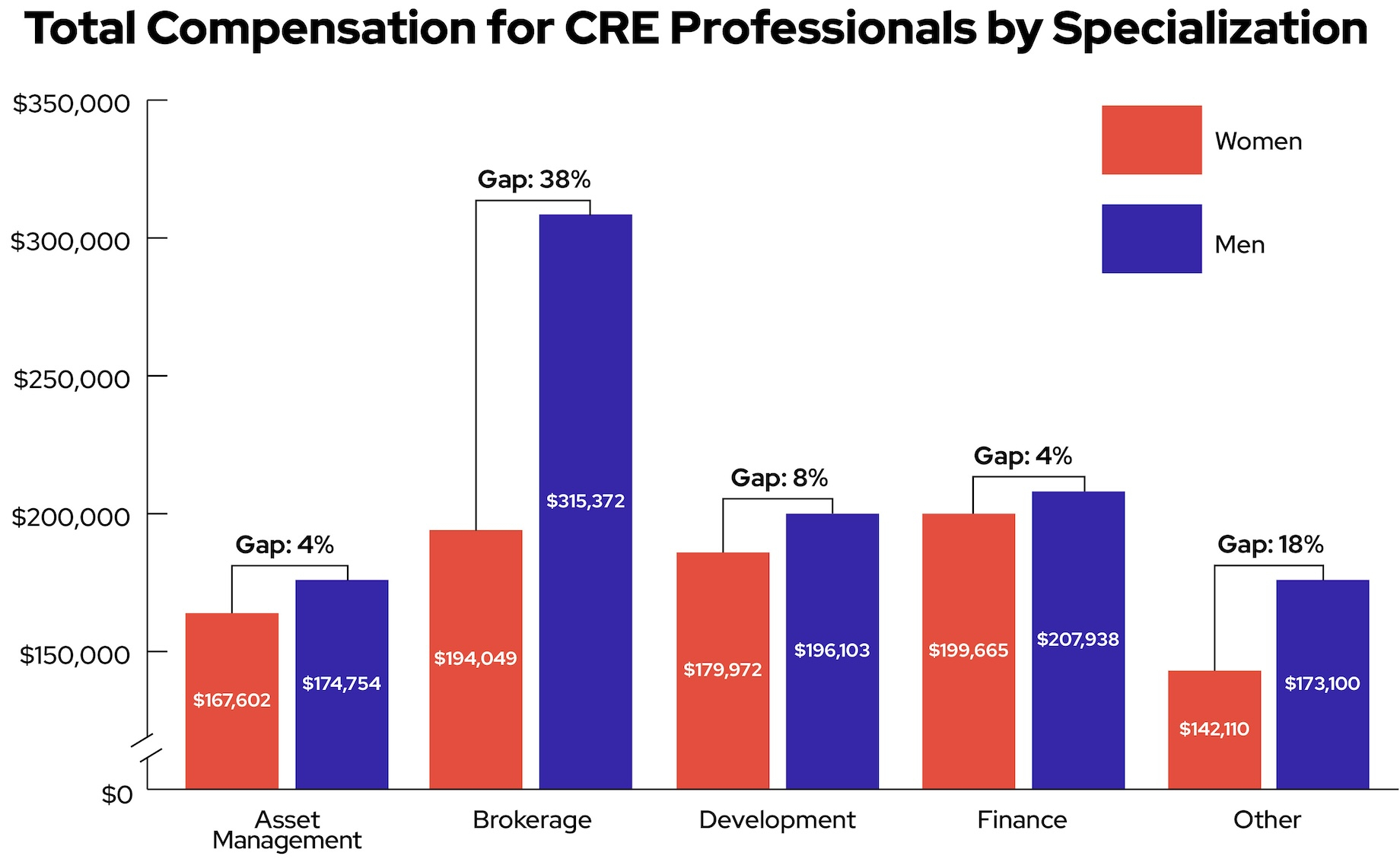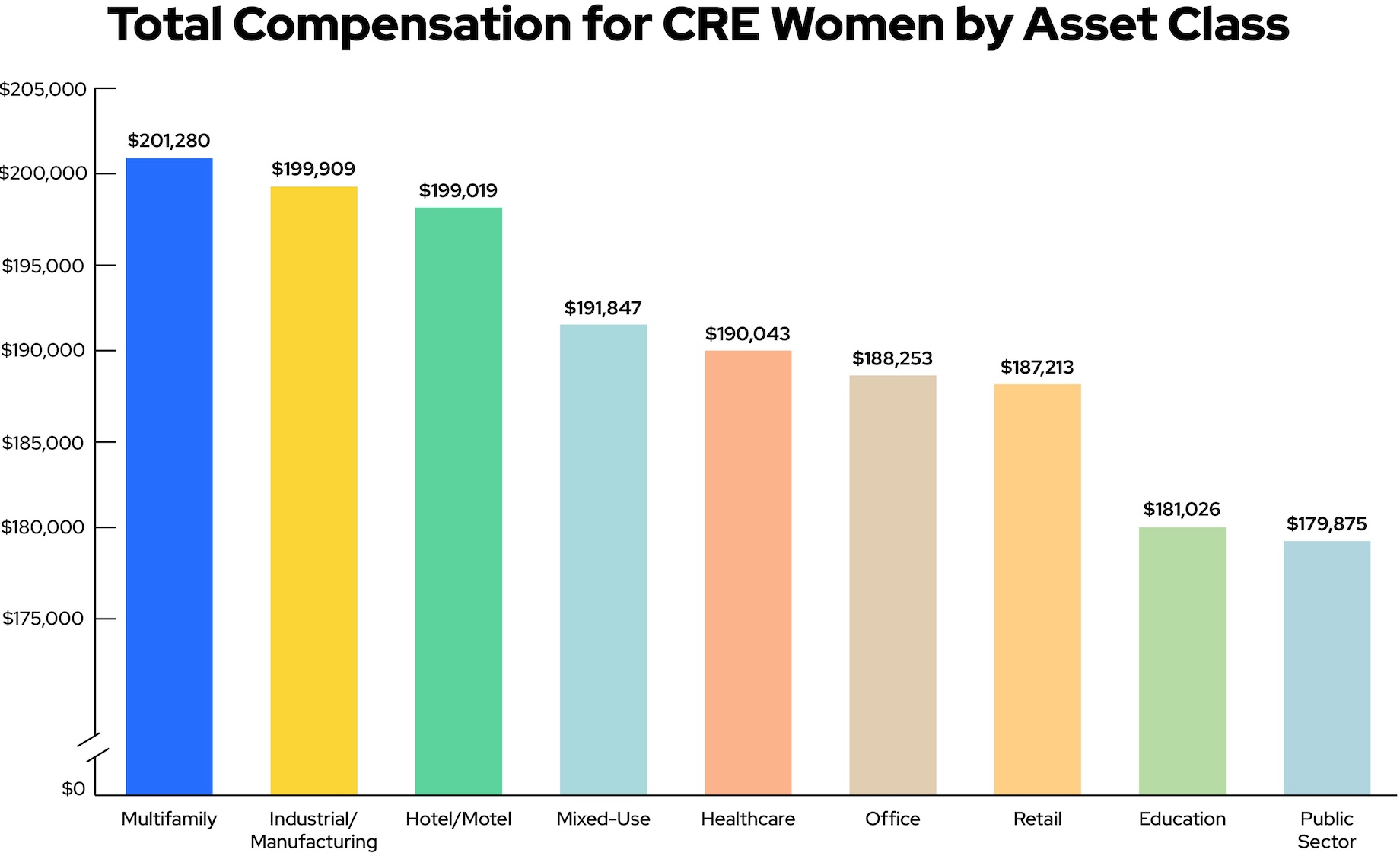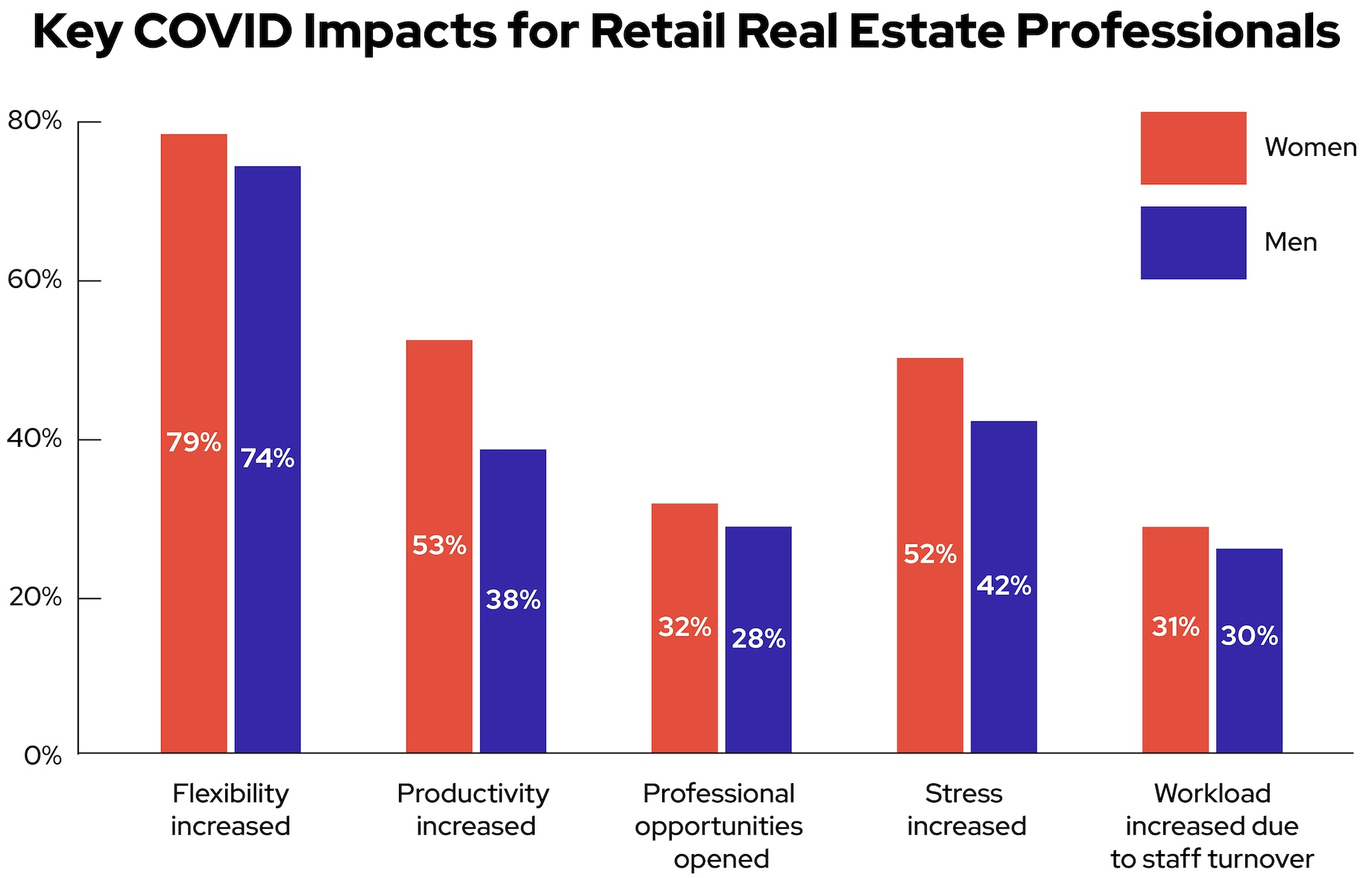The Short Version
- CREW Network study shows progress in pay equity and flexibility for women in commercial real estate and retail real estate.
- Gender discrimination now ranks as the top barrier to success for women in the industry.
- The pay gap has narrowed, but declines stem from market contraction, not lasting structural change.
- Women in retail real estate earn less than other asset classes despite the sector driving innovation and industry transformation.
- A smaller percentage of women under 40 aspire to C-suite roles compared with men under 40, signaling a need for stronger support and mentorship
CREW Network Report Highlights Gains in Pay and Flexibility Alongside Ongoing Discrimination in CRE
The 2025 CREW Network Benchmark Study, titled Workplace Data and Trends in Commercial Real Estate shows that the industry is making strides in reducing some of the entrenched gender inequities. Yet women are still navigating an uneven playing field in what remains a male-dominated industry. “While the representation of women in the industry remains stagnant, the compensation gap is narrowing and women have more work flexibility than ever,” said CREW Network CEO Alison Beddard. However, the study — which CREW released in partnership with the Massachusetts Institute of Technology Center for Real Estate with support from the CREW Network Foundation and underwriting from ICSC, the Mortgage Bankers Association and NAIOP — also identifies areas that require renewed effort to drive change, she added.
Gender Discrimination Emerges as the Top Barrier for Women in CRE
For the first time in the 20-year history of the study, women report that gender discrimination in the workplace is their primary barrier to success. Other reasons, in order, were work-life balance, lack of promotion opportunity, lack of mentor/sponsor and family/parenting responsibilities. In contrast, the No. 1 barrier for men was work-life balance. Among the 2,450 respondents, who were surveyed between January and April, 44% work in retail real estate.

Source: CREW | Graphic: ICSC Commerce + Communities Today
“On one hand, what I’m seeing across the industry is women really starting to finally own their skill sets, their competencies and confidence in what they’re doing,” said Melina Cordero, president and founder of P20 Leadership, a consulting firm specializing in leadership development within the commercial real estate industry. Women are finding a seat at the table with more visible roles in commercial real estate, from brokers and property managers to developers, attorneys and lenders. On the other hand, women are recognizing that they’re not getting the same pay or opportunities to advance due to discrimination or bias, added Cordero.
Among the positive findings of the study, it appears that companies have made strides to eliminate barriers women have experienced in the past, including the lack of promotion opportunities and the lack of a company mentor or sponsor, noted Beddard. Discrimination may be a more difficult barrier to break down because it is often unconscious and challenging to identify, she said, but “when companies are aware of these barriers, they can take action to put programs and policies in place that support women’s access to opportunity and mentors, for example.”
CRE Gender Pay Gap Narrows, but for the Wrong Reasons
Gender disparity in compensation moved in a positive direction. Women’s average fixed base salary in commercial real estate in 2025, $146,103, is only 4% behind men’s $151,418. In terms of total overall compensation including commissions, bonuses and profit sharing, men earn 13% more than women. Still, that is a significant improvement compared to the 34% gap in the 2020 study. The pay disparity is similar for retail real estate, in which women make 6% less than men in fixed base salary and 11% less in overall annual compensation.

Source: CREW | Graphic: ICSC Commerce + Communities Today
Although it’s encouraging that the pay gap is narrowing, it’s also important to look at why, said ICSC COO Whitney Livingston. Averages tend to tighten when the market contracts. “This report makes it clear that it’s not a result of structural progress; it’s mostly because commissions and bonuses have dropped across the board,” she said. According to the study, the change was driven almost solely by a decline in men’s average commission and bonus revenues, which dropped nearly 80% across commercial real estate asset classes from 2020 to 2025.

Source: CREW | Graphic: ICSC Commerce + Communities Today
Women in Retail Real Estate Face Lower Pay Despite Industry Innovation
One concerning finding is that women working in retail real estate report some of the lowest compensation in the commercial real estate industry. Among nine asset classes, women in retail ranked seventh, ahead of only education and public sector real estate jobs.

Source: CREW | Graphic: ICSC Commerce + Communities Today
The irony is that retail has become a more forward-looking asset class within commercial real estate, noted Livingston. “It’s where we’re seeing the most innovation around mixed-use and community placemaking and adaptive reuse, and many of the women who are leading that transformation are bringing immense value,” she said. “The industry will eventually have to reconcile the gap between that perception and reality, and the compensation should follow accordingly.”
It’s also notable that there continues to be a greater pay disparity across asset classes when looking at ethnicity. Asian and Black women make significantly less than white and Hispanic women. “It’s an uphill battle for women in general, and it’s an even larger uphill battle for women of color, who remain the minority in the industry,” said Cordero.
Women Still Underrepresented Across Commercial Real Estate Roles
Survey results show little change in the participation rate of women in commercial real estate over the past 20 years. Women comprise 38% of the industry’s workforce, up 1 percentage point from 2020 and only 4 percentage points from 2010. Although there is more parity in the number of women and men in certain roles, such as asset management, women are significantly underrepresented in others. They make up only 31% of brokers, for example. Only 32% of women said they were willing to work on commission, compared with 45% of men.
“I do believe that women are more risk averse and they don’t want to be in a commission job,” said Tori Nook, a principal and founder of Anchor Retail. Especially in commercial real estate, it can take three to five years to get established, and not everyone has the financial savings or support to take on a commission role.
MORE FROM C+CT: A Rare Woman-Owned Brokerage Firm
Additionally, there’s still a deep “boys’ club” undercurrent in the industry, added Nook. That culture can deter some women from choosing a career in brokerage, where dealmaking depends heavily on relationships. Nook has found it more difficult to find women to fill brokerage positions at her firm because fewer are interested or applying. Including Nook, three of the Ohio firm’s eight brokers are women.
Hybrid Work Boosts Flexibility but Exposes Gender Bias in Advancement
One of the positive post-COVID trends is that women are enjoying increased flexibility in work settings and are taking advantage of remote and hybrid opportunities. Commercial real estate professionals now spend only 57% of their time in the office, and women work remotely 15 hours per week, which is two hours more than men. In retail real estate, men and women each average 15 remote hours per week.
However, the shift raises speculation that spending less time in the office could contribute to future inequity in compensation and career advancement. “Hybrid work has been transformative for all, especially women balancing demanding jobs and families, but also [has exposed] a bias, which is the idea that visibility equals value,” said Livingston.

Source: CREW | Graphic: ICSC Commerce + Communities Today
Women are more than twice as likely as men to report that their career or compensation has been negatively affected by their marital/family status or care of family. Just over a quarter, or 27%, of women working in commercial real estate indicated such negative impacts in 2025, up from 21% in 2020.
Remote work helped give women more flexibility, but it also blurred the lines and increased expectations, added Livingston. “The solution isn’t just more flexibility; it’s really shared responsibility and structures that better support caregivers of all genders,” she said.
Fewer Young Women in CRE Aspire to C-Suite Roles
Men and women equally aim for C-suite roles long-term: 30% for men and 30% for women. However, the 2025 study also shows a pullback in women under 40 who aspire to C-suite positions, from 36% in 2020 to 31% now. In retail real estate, even fewer women aspire to C-suite positions, 28% compared with 35% of men.

Cordero views that shift as a “red flag,” as the CREW study said women represent only 9% of C-suite roles in commercial real estate even now. “This is a huge indicator that we need to be looking at that younger generation,” she said. “What do we need to be doing to support not just their growth but their ambition, their feeling of support in the industry and their feeling that this is something that they can attain?”
Beddard also hopes that the latest CREW Network study galvanizes more industry action — companies prioritizing and financially supporting women’s professional development and learning, for example. “The CRE industry must continue to understand the issues presented in this study and treat resolving them as a business imperative,” she said.
By Beth Mattson-Teig
Contributor, Commerce + Communities Today